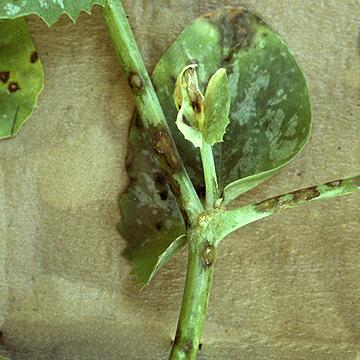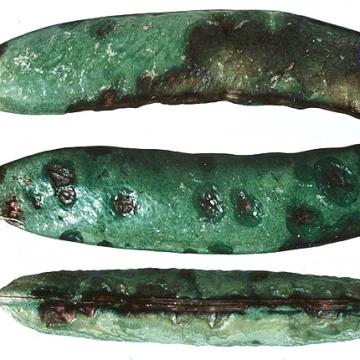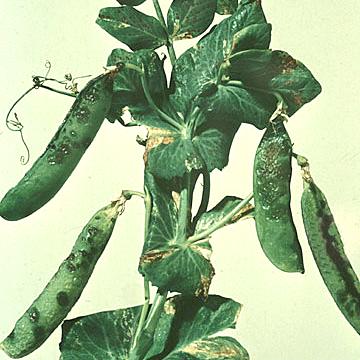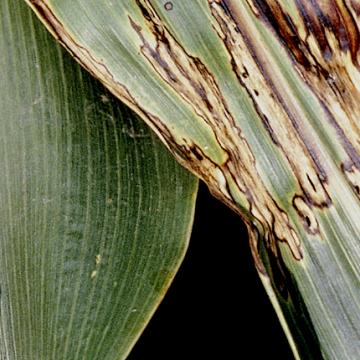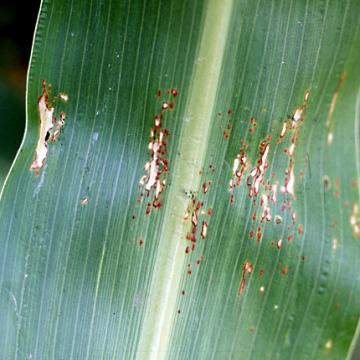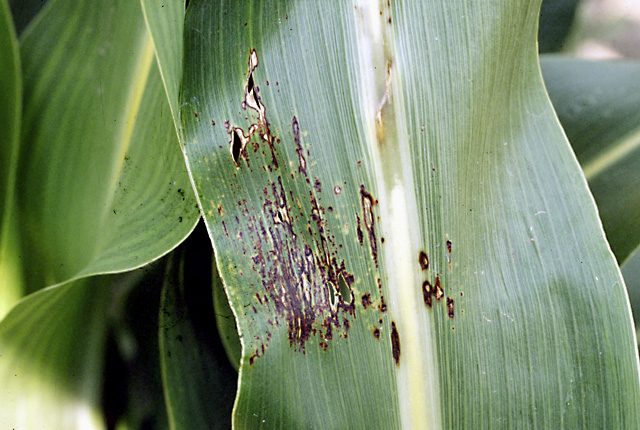DISEASE: Bacterial blight
HOST: Pea
Pea pod with diseased seeds and infection along the suture.
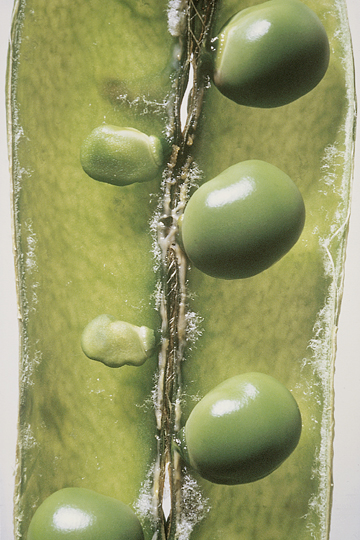
Bacterial blight | Pea
DISEASE: Bacterial blight
HOST: Pea (Pisum sativum)
PATHOGEN: Pseudomonas syringae pv. pisi
SOURCE: J. M. Kraft
DISEASE: Bacterial blight
HOST: Pea
Pea plant with water-soaked lesions on stems and leaves with some bacterial exudate evident. Irregular lesions turn dark brown with light tan centers. Severe distortion of stems, petioles, and growing points may occur.
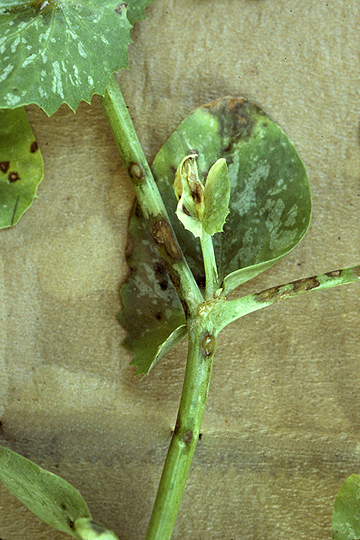
Bacterial blight | Pea
DISEASE: Bacterial blight
HOST: Pea (Pisum sativum)
PATHOGEN: Pseudomonas syringae pv. pisi
SOURCE: S. Thomson
DISEASE: Bacterial blight
HOST: Pea
Dark lesions on pods and dorsal sutures.
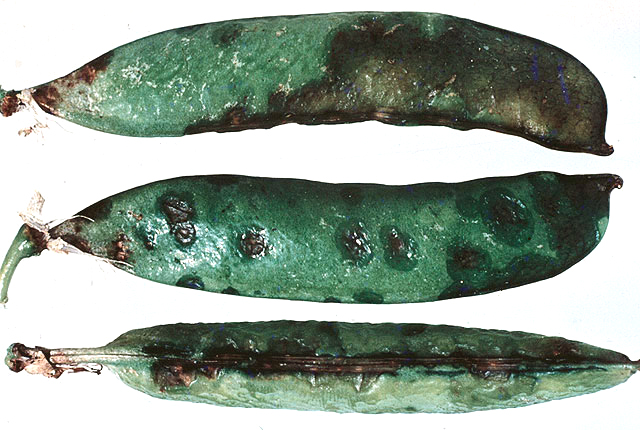
Bacterial blight | Pea
DISEASE: Bacterial blight
HOST: Pea (Pisum sativum)
PATHOGEN: Pseudomonas syringae pv. pisi
SOURCE: J. Young
DISEASE: Bacterial blight
HOST: Pea
Severely diseased plant with array of blight symptoms.
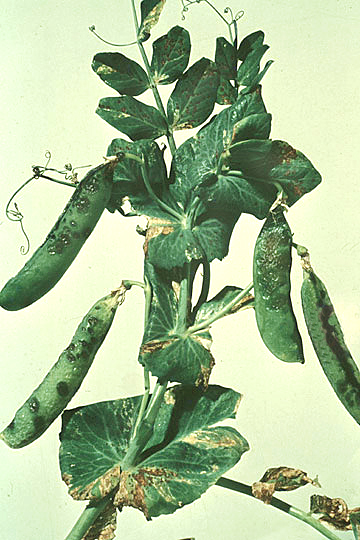
Bacterial blight | Pea
DISEASE: Bacterial blight
HOST: Pea (Pisum sativum)
PATHOGEN: Pseudomonas syringae pv. pisi
SOURCE: J. Young
DISEASE: Bacterial blight
HOST: Pea
Leaves with typical blight symptoms. The disease also affects nodes, stipules, floral parts, stems, and pods.
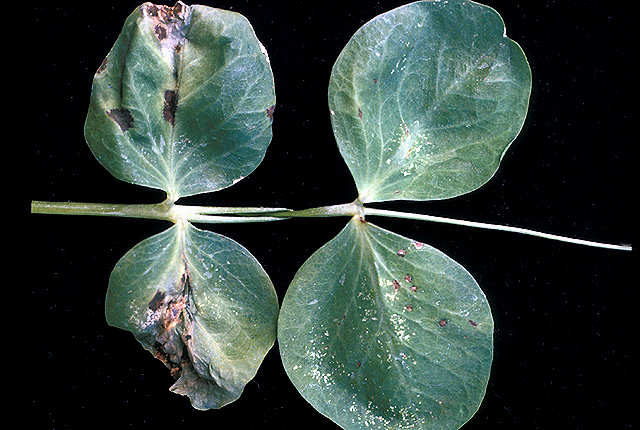
Bacterial blight | Pea
DISEASE: Bacterial blight
HOST: Pea (Pisum sativum)
PATHOGEN: Pseudomonas syringae pv. pisi
SOURCE: M. Schroth
DISEASE: Bacterial blight
HOST: Soybean
Leaves with yellowish brown necrotic lesions. Lesions also may be yellow to light brown and bordered by yellowish green halos. Lesions occur on stems, petioles, and pods.
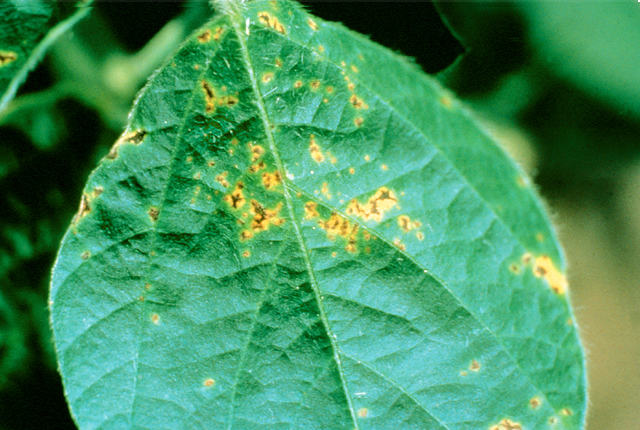
Bacterial blight | Soybean
DISEASE: Bacterial blight
HOST: Soybean (Glycine max)
PATHOGEN: Pseudomonas syringae pv. glycinea
SOURCE: J. B. Sinclair
DISEASE: Bacterial leaf blight
HOST: Sorghum
The disease begins with interveinal water-soaked streaks that broaden into irregularly shaped areas with necrotic centers and red margins.
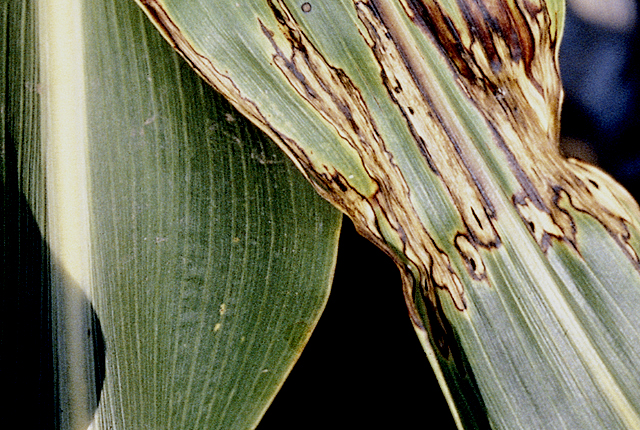
Bacterial leaf blight | Sorghum
DISEASE: Bacterial leaf blight
HOST: Sorghum (Sorghum bicolor)
PATHOGEN: Acidovorax avenae
PATHOGEN SYNONYM: Acidovorax avenae subsp. avenae
SOURCE: APS
DISEASE: Bacterial leaf spot
HOST: Sorghum
Leaf with red and necrotic streaks along veins.

Bacterial leaf spot | Sorghum
DISEASE: Bacterial leaf spot
HOST: Sorghum (Sorghum bicolor)
PATHOGEN: Pseudomonas syringae pv. syringae
SOURCE: L. Claflin



